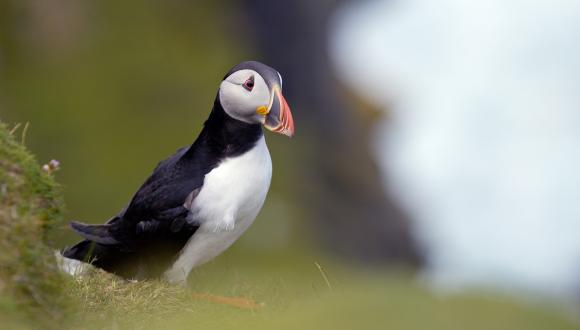
Watch out for roe deer on the roads
24 May 2024
Drivers are being reminded to be alert for roe deer on the roads at this peak time of year for collisions between deer and vehicles.
NatureScot’s spring road safety campaign, in collaboration with Transport Scotland and Traffic Scotland, is now underway with warning messages being displayed on selected electronic variable message signs (VMS) until June 14.
Deer populations in Scotland have increased in number and spread in range over the past 50 years, particularly in urban and lowland areas.
Together with an increase in road traffic this has resulted in collisions between deer and vehicles becoming increasingly common, with almost 2,000 recorded incidents each year. It is thought many more go unreported.
May and June are the peak months for collisions as young roe deer disperse to look for their own territories, with dusk the period of highest risk.
Electronic messaging reminding drivers to be aware will be displayed on selected VMS targeting roads where the risk of a collision is heightened – the majority of which are in the central belt.
The same message will also be in place on signs in other locations across the country where collisions are a concern, including around Perth, Aberdeen, Dundee and Inverness.
Dominic Sargent, NatureScot Deer Policy Officer, said: “Tackling the issue of deer/vehicle collisions is an important part of our work in managing deer impacts across Scotland. Reducing the risk not only helps to safeguard the public but is also beneficial for deer welfare.
“We know from recent analysis of deer/vehicle collisions on our trunk road network that many high-risk areas are around road junctions and major interchanges, predominantly in the central belt. Our campaign will remind drivers in these areas to be alert and slow down to help reduce the likelihood of collisions.
“We’re also continuing to explore what more can be done to mitigate the risk of collisions, with staff investigating deer numbers around high-risk areas and speaking to local land managers about their deer management plans.”
Angus Corby, Transport Scotland Landscape and Biodiversity Manager, said: “Reducing the risk of deer-vehicle-collisions across Scotland’s Trunk Road Network is a real challenge, and Transport Scotland is pleased to continue our important partnership with NatureScot to tackle the issue.
“We are working closely together to establish and maintain a picture of the high-risk areas across the country, so we can focus our mitigation efforts and make them as effective as possible, both for road-user safety as well as the welfare of the deer.”
Additional information
The top 10 areas for collisions according to the data are:
A78 - East of Eglington Interchange
A78 - North of Warrix Interchange
A82 - Renton Junction
A9 - Dunblane West Junction
A9 - North of Navidale Roundabout
M8 - North and West of Livingston Interchange
M8/A898 - Craigton Interchange
M823/M90 - Pitreavie Interchange
M9 - East of Pirnhall Interchange (South)
M90 - North of Muirmont Interchange
Tips for driving safely:
- Particularly in peak times, slow down and watch for deer crossing roads. Be aware that if you're driving near woods, deer can suddenly appear leaving very little time to for you to react.
- Try not to swerve to avoid hitting a deer. A collision into oncoming traffic could be even worse.
- Only brake sharply and stop if there is no danger of being hit by following traffic. However, try to come to a stop as far away from the deer as possible to allow it/them to leave the roadside without panic, and use your hazard warning lights.
- After dark, use full-beams when there is no oncoming traffic, as this will illuminate the eyes of deer on or near a roadway and give you more time to react. But dim your headlights when you see a deer or other animal on the road so you don’t startle it, and slow down.
- Report any deer vehicle collisions to the police. They can contact a local person who can best help with an injured deer or arrange removal of a carcass from the carriageway. Even if you’re uninjured and your car isn’t damaged, the deer may be fatally injured and suffering. Do not approach an injured deer yourself – it may be dangerous.







